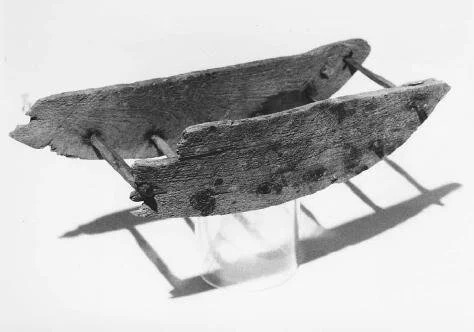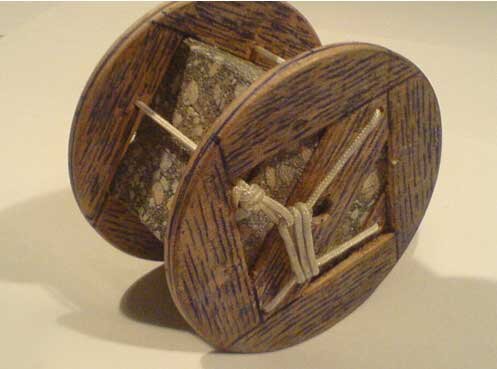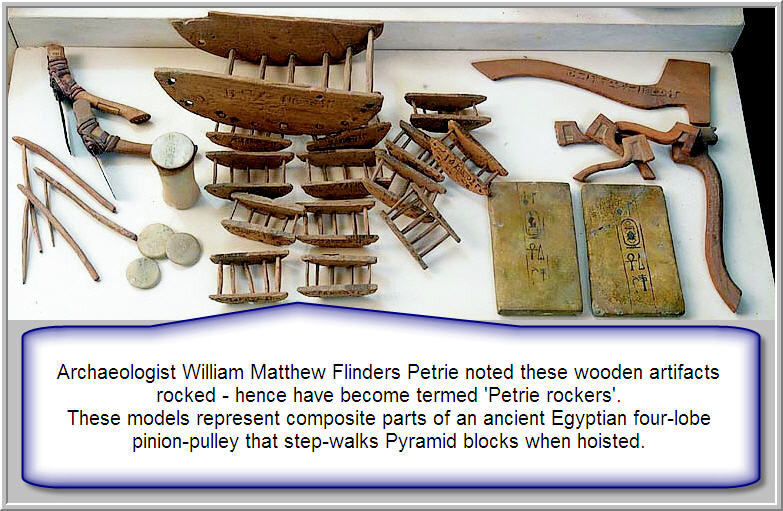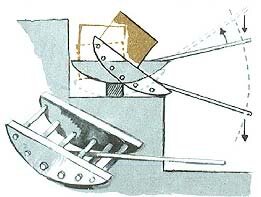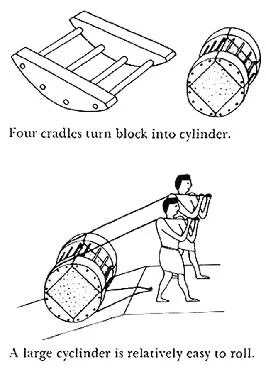PYramid construction
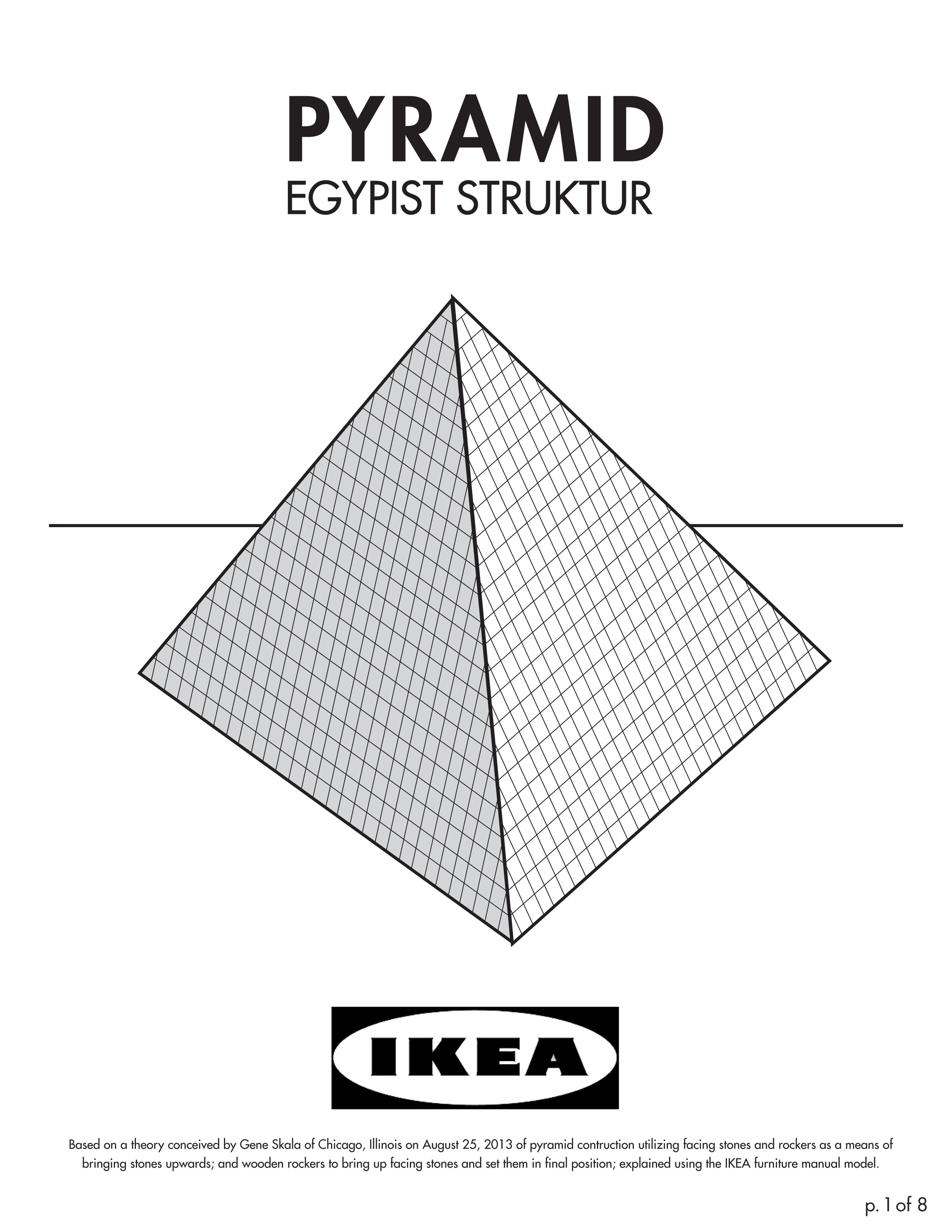
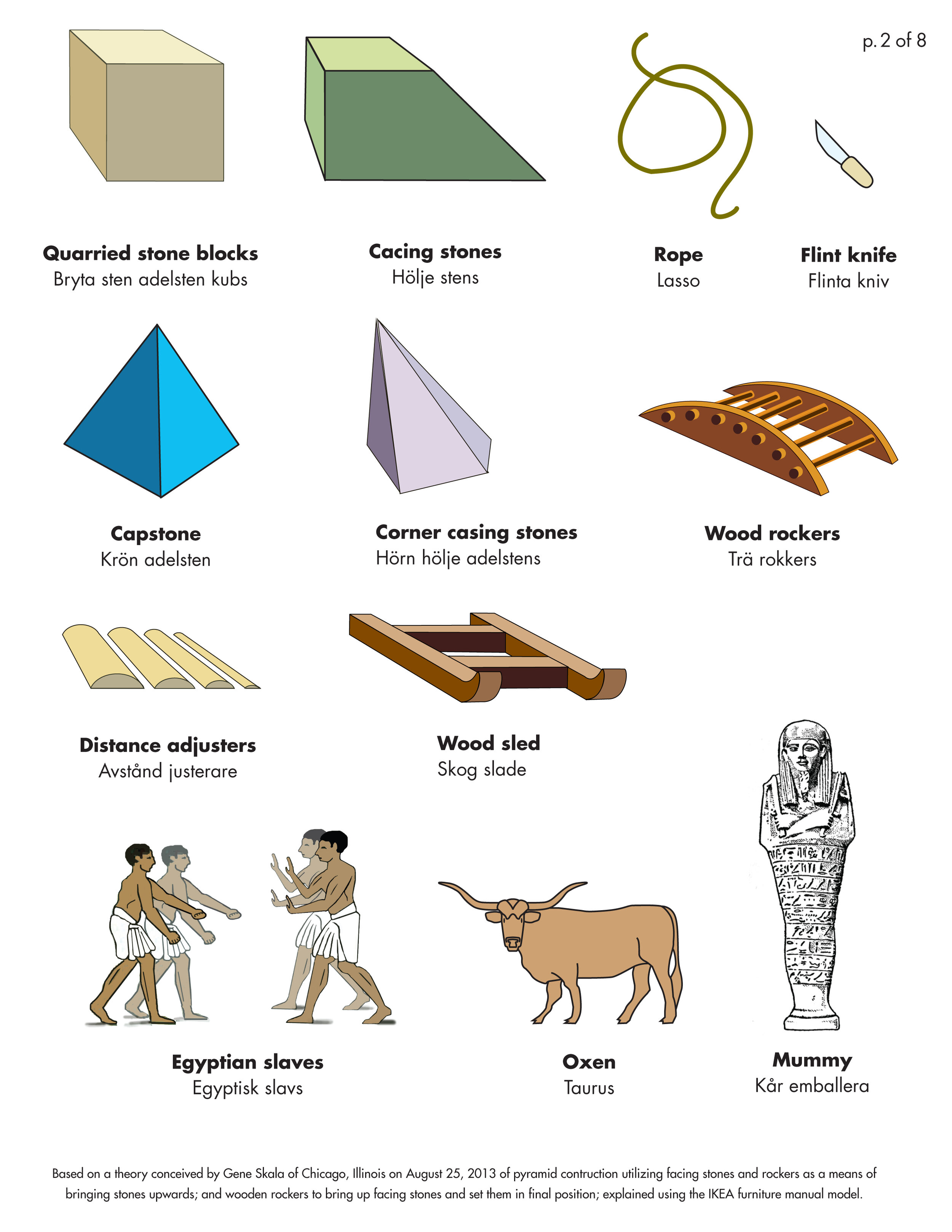
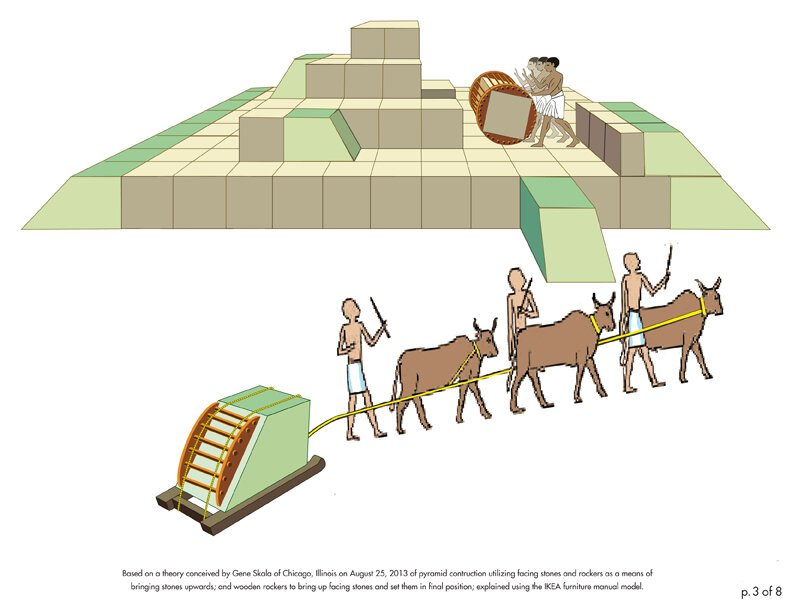
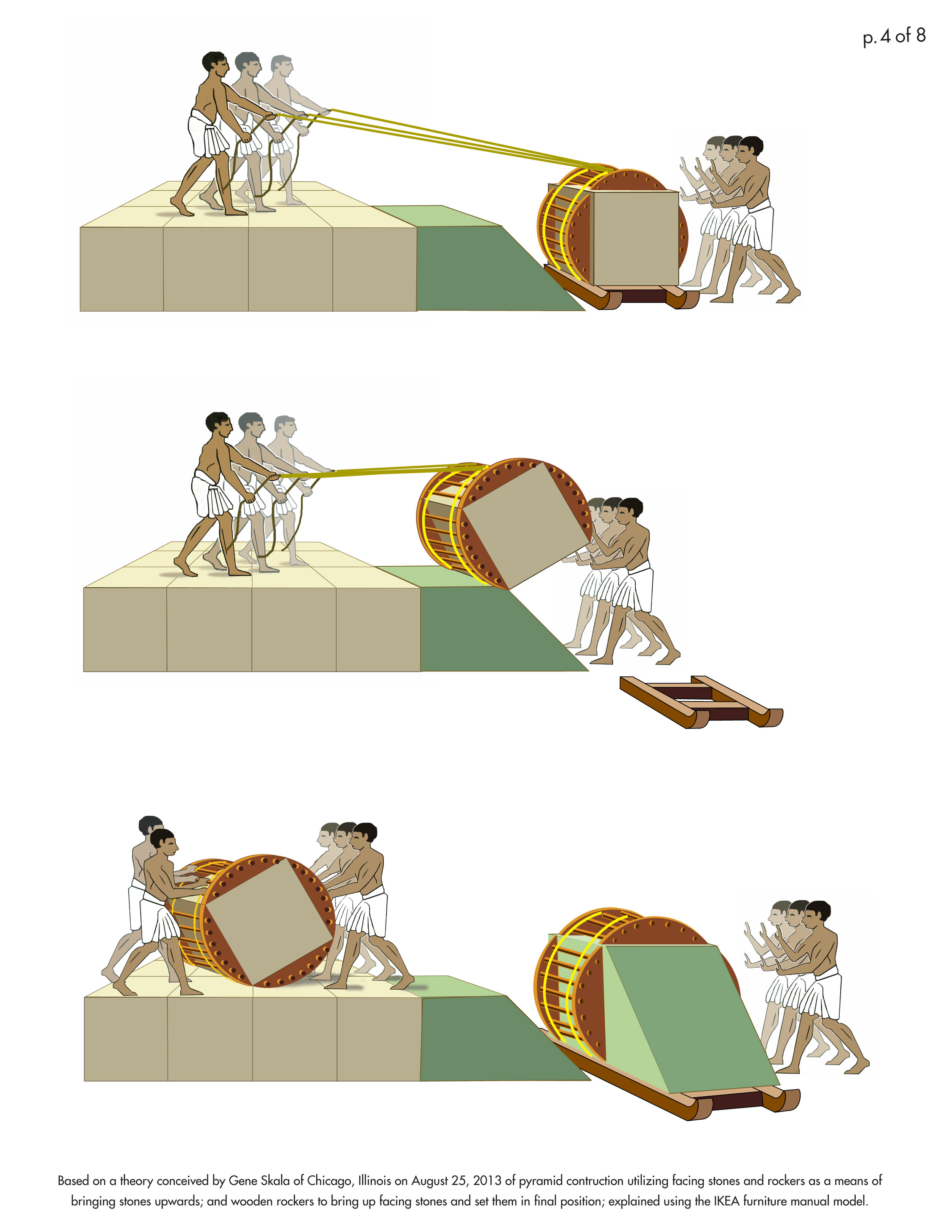
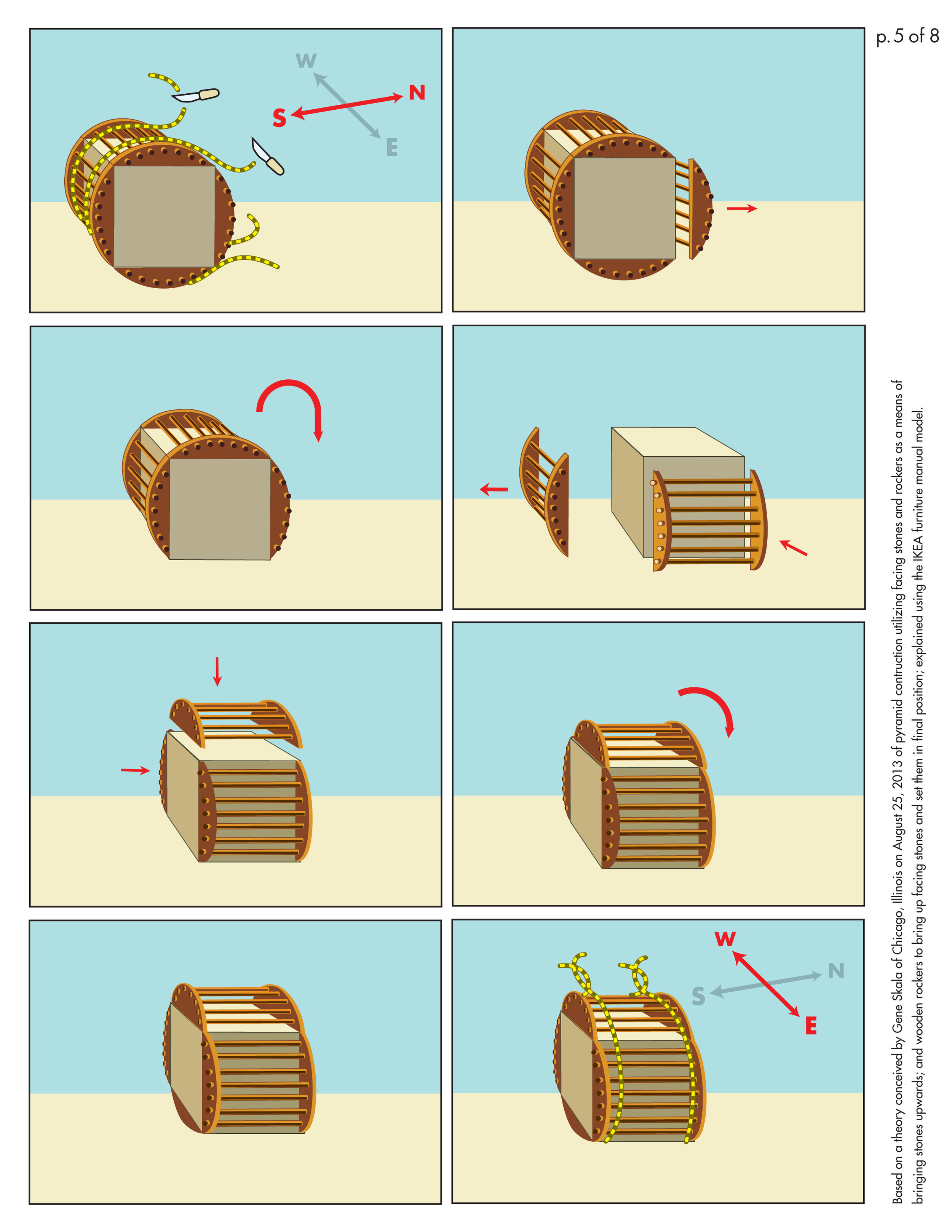
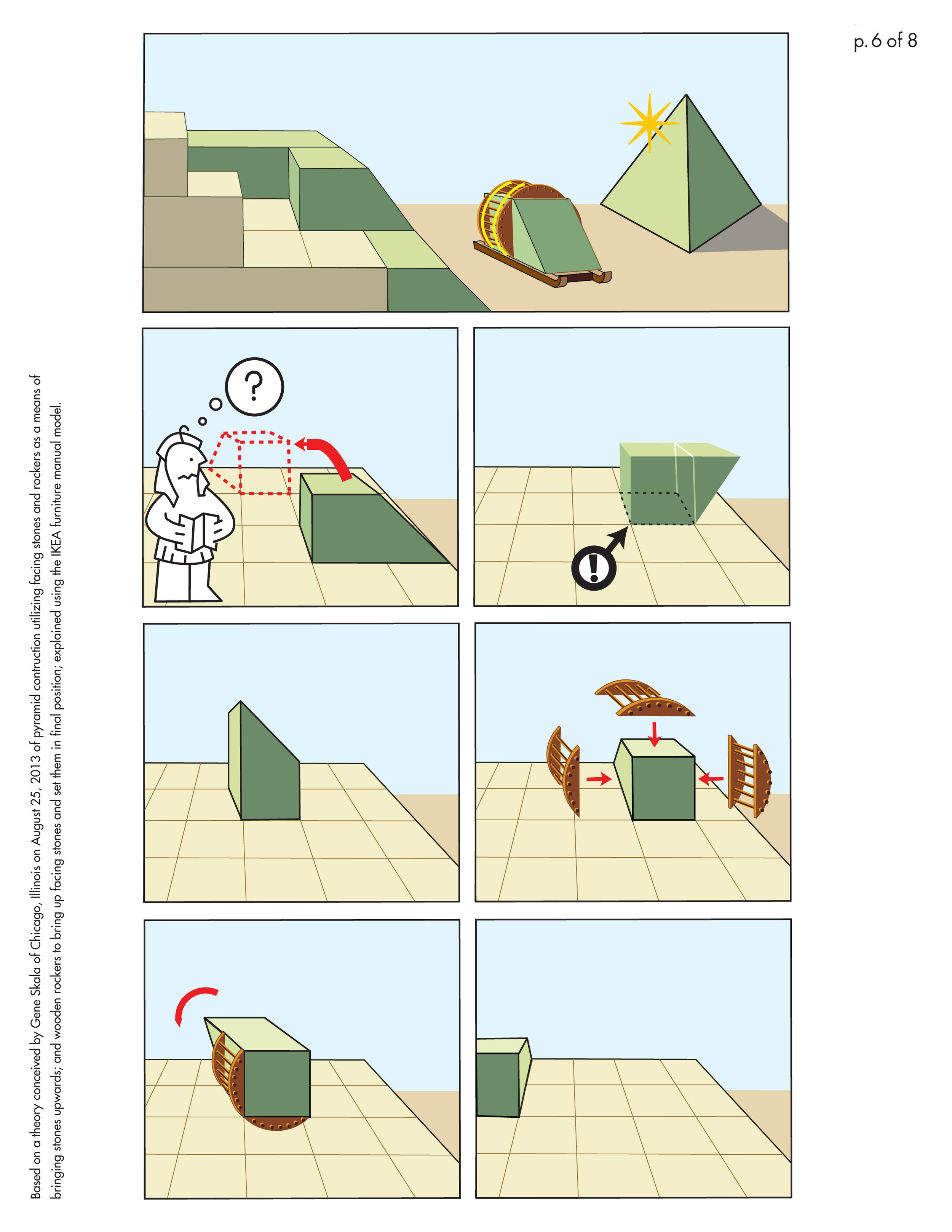

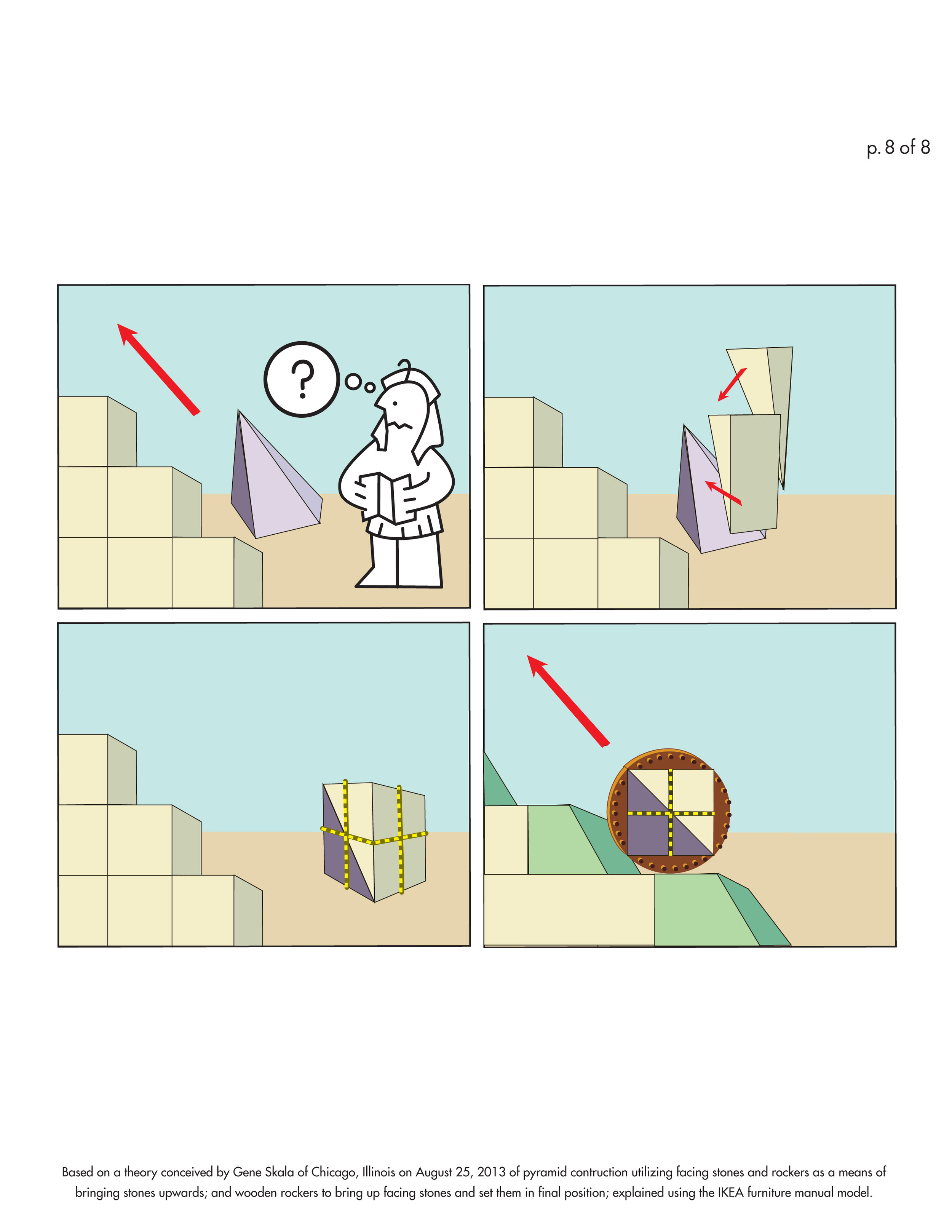
Between August 24th and 29th of 2013, I was reading a book on Ancient Egypt. In it were photographs of various tombs filled with objects in situ. Among them was a small wooden construction reminiscent of the bottom of a rocking chair. I seem to recall the book's author writing that it was the bottom of a baby’s rocking crib. Makes sense, right? Well, not to me because the look of it didn’t “feel” like one. I imagined the archeologist who discovered this object holding it up and saying to colleagues, “hey, check out the baby rocker!” and from that moment on entered the record unchallenged.
I thought about this rocker for a few days and as an exercise of creative brainstorming, I wondered what else besides a baby’s basket might sit on it. I thought of something heavier, like rocking horses or maybe something even heavier sculpted out stone. Then the thought of quarried stones… and you can see where my line of reasoning was headed.
I made four miniature rockers out of basswood, cut some pieces of twine, and from a bin of plasticine clay, I molded out basic shapes of quarried stones the Great Pyramids were made with. And like the obsessed UFO witnessed in Close Encounters Of The Third Kind, I sat at my kitchen table and got down to the business of trying to solve basic construction problems that Ancient Egyptians might have come up with if they had, in fact, created the pyramids by … er, rolling around stones. Because I was able to find solutions, With the exception of how the cornerstone was placed, I was (and remain) convinced this is how the pyramids were made.
About two years later someone online posted a similar theory, not using rockers per se, but something resembling of what reminds me of large cable spools (see image gallery below). Regardless, I don’t believe in original thoughts; they seem to arrived on a wave of many people thinking along similar lines.
Since I really don’t even consider myself an armchair Egyptologist, the task of presenting my theory is a formidable task in and of itself, but as an artist I’ve learned to sometimes let humor and satire do the heavy lifting, hence this parody of an IKEA instruction manual I created to explain my theory. Enjoy!
Below: Images of rockers found in tombs and some ideas from others about their use.

